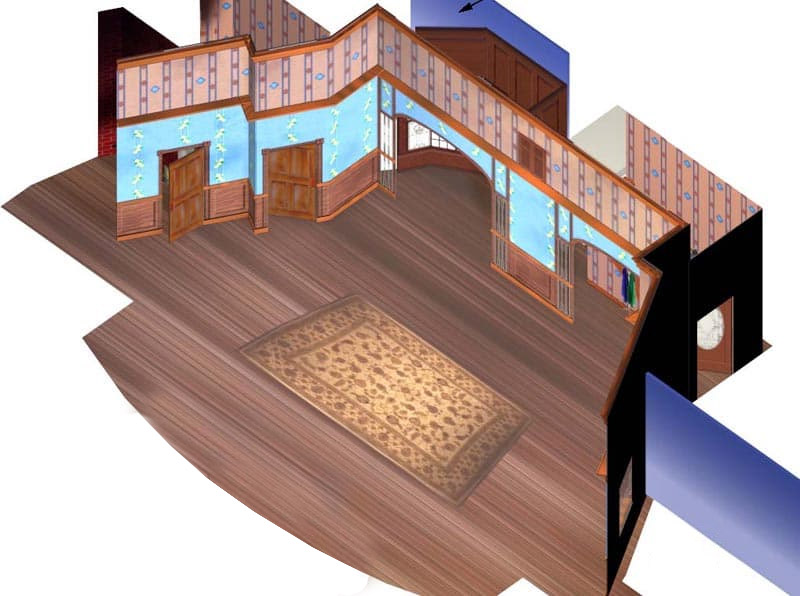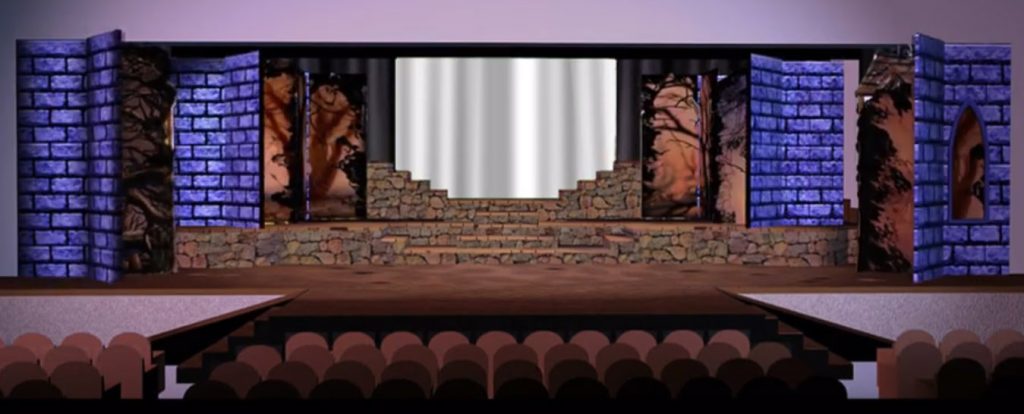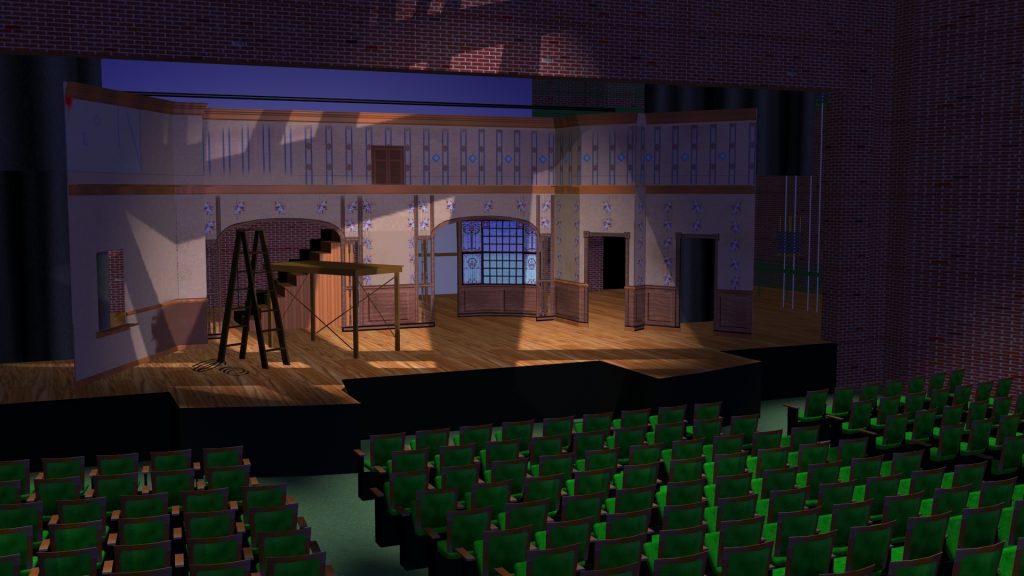by Wenger Guest Author Matt Kizer, Director of Theatre at Plymouth State University

If you are the director of a school drama program, the odds are pretty good that when you started, you felt like you were thrown straight into the deep end. The director of the theatre program is often also the English teacher or the Music teacher. If you have in-depth theatre training, you might be on better footing than many others. Even so, you are one person trying to do the work of at least five people. You have to teach acting. Maybe dance. Maybe music. That scenery isn’t going to build itself. How well do you sew? Do you paint? How much do you know about electricity?
I maintain a blog of sorts at a domain called scenicandlighting.com. It started out as basic portfolio site, but it’s grown and grown over the years. Whenever I have a little time, I try to add something more to it that makes it helpful and useful. If you are a drama director wearing all of the hats in your theatre company, you might take a look at some of the articles.
This one is a video article: Simple Design Choices and Stability of Basic Scenery. It includes simple advice on how to make walls more interesting, more stable, and easier to build.

There’s a common trap that captures some people building scenery – especially novices. Maybe the drama program is run by a solitary English or Music teacher; someone who does everything for the show. “Okay, students! We don’t have time for anything fancy. Let’s just get these walls up.” “There’s so much else to get done, we’re going to keep this simple!” The flats are then assembled in long straight lines. The result is a simple box set. With a lot of braces behind it. When a door is slammed, the entire wall reacts by swaying and shuddering. Wallpaper is a go-to because it kind of makes the seams go away. Somebody maybe adds another hundred braces to the back of the set, time allowing. The braces are necessary to keep everything stable and rigid. The back of the set looks like modern art performed by insane beavers.

Some of the articles talk about different methods of changing scenery. There are some dramatic, exciting methods of changing scenery that can rely on your stock scenery and are easy enough to build. For example, this article is titled Changing Scenery with Story Book Panels. It is a demonstration of a build from 2006 for Disney’s Beauty and the Beast in a space with no flies and shallow wings. The design relies on the observation that every setting in the show happens in either The Village, The Castle, or The Forest. A simple system of wooden storybook panels flips among these three settings, while a centered modestly sized projection screen finalizes each locale.

I have experienced a phenomenon in school and community theatre where pressure builds up to put lots of excited but untrained volunteers in key positions backstage. This can often save a lot of money, and it feels good because it maximizes involvement. Unfortunately, as trained, experienced technicians are thinned out backstage, the potential for problems and danger increases. I made this video in 2021 to provide some language and some perspective for schools and community theatres who might feel things are getting a little uncomfortable as pressure mounts to thin down their staff. Managing Risk in the Theater Space
The site includes many other useful things for educators. There are many more articles and videos, virtual light labs, and more. I was asked to share some content on this blog. I hope that many of you find this material useful to yourselves and to your students.

Matt Kizer lives with his wife and son in the White Mountains of New Hampshire. He is the Director of Theatre for Plymouth State University, where he has been the head of the design and technology program since 1996 and currently serves as Director of Theatre. He specializes in projections and HTML tools for theatre and theatre education. Kizer is a member of the United States Institute for Theatre Technology (USITT) where he is a member of the Digital Media Commission and the International Activities Committee. Read more about Matt on his website at scenicandlighting.com.






